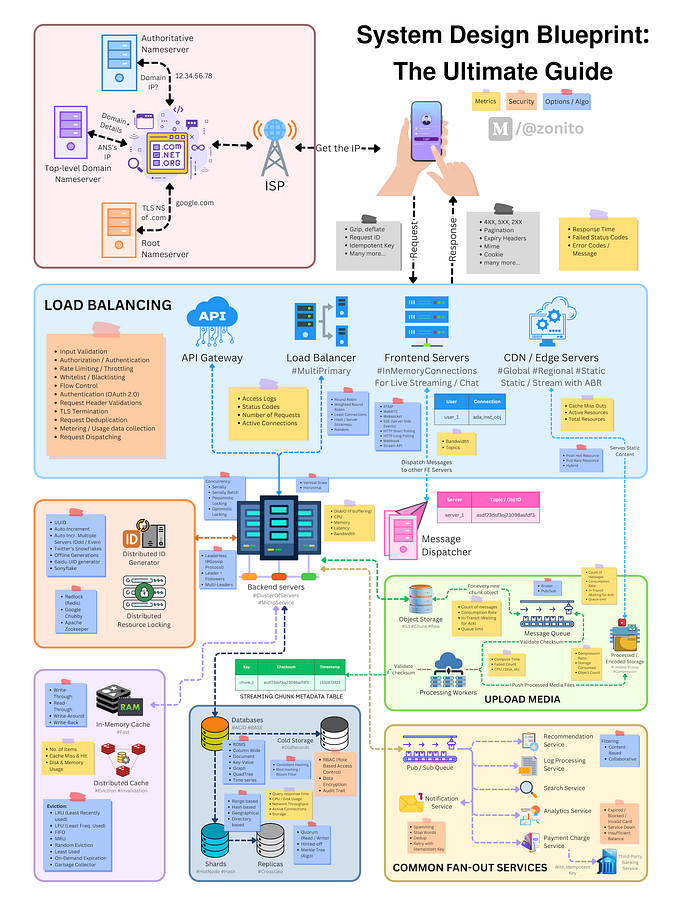Getting Started with MQTT — Part 1
This tutorial is first part of three-part tutorial series on “Getting Started with Mqtt” and will cover basic concepts of Mqtt
MQTT — Introduction
MQTT is a publish-subscribe based messaging protocol that works on top of TCP/IP protocol. It is designed for connections with remote locations (eg:IOT devices) where our network bandwidth is limited and we require quick delivery.
MQTT works on publisher/subscriber pattern in which two clients (publishers or subscribers) never contact directly and instead communication between them is handled by a third party. In MQTT, we call this third-party “Broker”.
Aspects of MQTT protocol
- To communicate with each other, publisher and subscriber only needs to know IP and port of the broker and a common Topic. This removes dependency of each client knowing address of other client.
- Even though most messages are delivered on the go, MQTT also supports storing of messages. If desired, broker can store these messages when a client is not online. For this client needs to connect using a persistent session with QOS greater than zero.
- MQTT mostly works in synchronous manner which results in no lagging in delivery.
- MQTT uses subject based filtering and broker uses Topics to decide on which subscriber is to receive which message.

Temperature Sensing example with MQTT Implementation
A temperature sensor publishes real-time temperature values to “temp” topic on MQTT-Broker.
Broker then multicasts this information to all devices that had subscribed to topic “temp”.
MQTT - Client
- In MQTT, both publishers and subscribers are clients.
- A client can act both as a publisher or subscriber and name only signifies sending or receiving party.
- Ease of implementation and MQTT-client’s ability to work on low bandwidth network is what makes it perfect to use in IOT based devices.
- Micro-controllers, pi, AWS servers running on MQTT can act as clients.
- Different languages based client libraries are available here on wiki.
MQTT - Broker
- Broker acts as a mediator between publisher and subscriber.
- MQTT brokers can handle thousands of messages at a time due to its simplified architecture. Here is a comparison between MQTT and HTTP protocols.
- Work done by broker : Receive all messages, filter these messages, find out subscribers to a particular topic, Send these message to those subscribed clients.
- Broker can also hold missed messages of persisted clients which can be sent to it once he comes online again. This is important for a case when some client gets disconnected unwillingly.
- Broker is also responsible for handling authentication and authorization.
MQTT - Connection
- MQTT broker and clients both are TCP/IP based.
- Connection is always between one broker and one client.
- Some important parameters needed for the connection :
“clientId” : should be unique per client and is needed to maintain state of the client. This will help to deliver new messages to the client which were not delivered to it when it was offline.
“cleanSession” : equals to false, if you want to establish persistent session and store these subscriptions.
“username/password” : sent as plain text if not encrypted.
“willMessage” : message to be sent by the disconnecting client to all clients of that topic in case it gets disconnected.
Need for Client-ID : Client-ID is needed to identify an application mainly when a client is using persistent subscriptions. When these subscriptions are offline, broker creates a backup of messages been delivered to them and when such applications come on-line again, a messaging provider has to identify these subscriptions and there messages. Broker then compares the persisted client-id across clients that came online and delivers messages to them.
Publisher/Subscriber in MQTT
- A MQTT Publisher client can start publishing messages as soon as it connects to the broker. Each message will contain a topic and payload to be sent.
- A MQTT Subscriber are the ones that receives messages that are published to a particular topic.
MQTT - Topics
- MQTT-Topic is a string that broker uses to filter messages. Only subscribers of a particular topic receives messages published to that topic.
- Topics consist of topic levels separated by a “/”. Example : “home/ground/room/temp”
- Properties :
1. Must contain atleast 1 character
2. Can contain empty spaces
3. “/” is a valid topic name
“MQTT-Topics” is an interesting concept. Click here for further information or read AWS guide on “MQTT-Topic”.
Relevant Reads
Apart from above mentioned details, there are few more topics that needs your attention :
- Quality of Service : QOS is a key feature of the MQTT protocol which gives client a power to choose among different level of services that matches its network reliability and application logic. Because MQTT manages the re-transmission of messages and guarantees delivery (even when the underlying transport is not reliable), QOS makes communication in unreliable networks a lot easier.
- Persistent Session in MQTT : In MQTT a client can request a persistent session when it connects to the broker. Persistent sessions save all information that is relevant for the client on the broker. Read : AWS Doc, IBM Doc.
- Last Will : This basically is a message that will notify other clients subscribed to a particular topic that this client has lost connection. HiveMQ Read explains it in details.
This story covered basic concepts related to Mqtt which will help you in getting started. Stay tuned for second part of this series covering Mqtt Broker and Client setup on a linux machine.
Happy Learning.
To connect with me on Linkedin click here.








